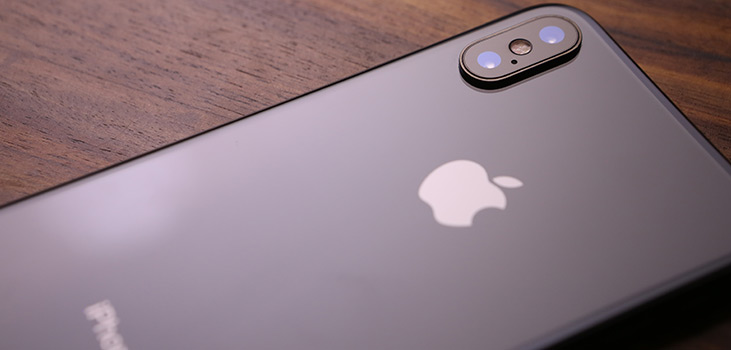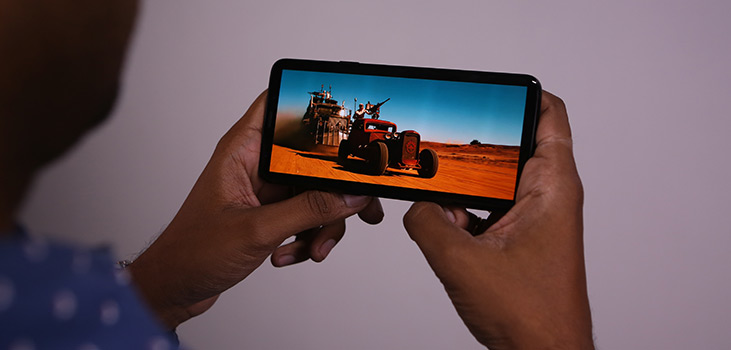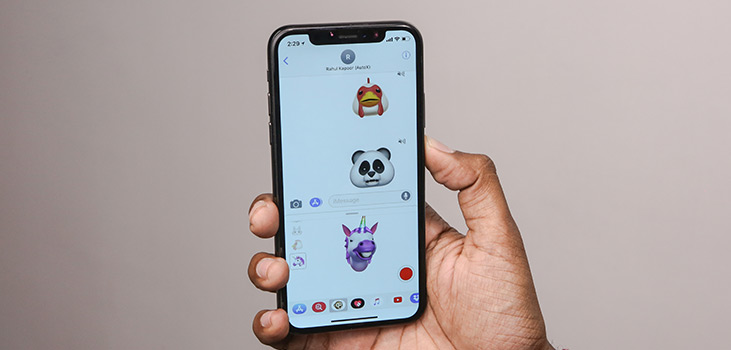Apple wants iPhone X to be the beginning of a new generation of iPhones. Will Google Pixel 2 XL and Samsung Galaxy S9 be able prove their worth in this unending flagship battle? Let’s find out.
Apple and Samsung have long been battling against each other to prove their dominance in the smartphone market, and so far, it’s been interesting. But usually in battles of such nature comes a point when they become quite predictable. So, the trick to win the game lies in more or less making an unpredictable move, and that’s what Apple seems to have done.
How? Well, usually new models are based on the good traits of their predecessors. While maintaining the same design aesthetics, they seek to enhance the user experience. Apple has been using this formula with the iPhone and iPad for multiple generations, but with iPhone X, it has completely reimagined the very idea of an iPhone – a very unpredictable move indeed.
Unfortunately, Samsung has failed to introduce this unpredictability into its product – if you remember last year’s Galaxy S8, you know the essence of 2018 Galaxy S9 Plus.
Google, on the other hand, is a another story. It’s Pixel 2 XL prefers function over form. The company could have gone for a flashy design, but it mostly focused on fine-tuning the basics. So, let’s see how these three flagships fare against each other.
Design
Taking design cues from the Galaxy S8, Samsung has made some small, mostly unseen, changes in the S9 Plus that, in fact, do result in an enhanced user experience, but not exactly a different one. S9 Plus, however, does have a slew of neoteric features crammed into it – something that we’ve come to expect from Samsung.
And while the overall design of S9 Plus is the same as that of the S8, it doesn’t mean that it’s not appealing. The S9 Plus has a smooth infinity pool effect, which makes you feel as if you’re holding just a screen. There is curved glass on both the front and the back, making the phone comfortable to hold and narrower than other phones with similar screen size.
Google Pixel 2 XL, at first glance, seems like a plastic phone, but it is constructed with Gorilla Glass and aluminium, just like every other high-end phone these days. But it’s the textured finish that makes this metal phone feel like a plastic one.
My favourite, out of the three, is definitely the iPhone X. Why? It’s sharp, polished and looks cleaner than previous iPhones. There is a significant camera bump on the back, and yes, there’s the notch on the display, which Apple calls the ‘sensor housing’.

Overall, the design of the iPhone X is very different than that of the S9 Plus, which simply has curved screen to create a bezel-less effect. There’s no headphone jack and no home button. You can press the top volume button and the sleep/wake button together to take a screenshot. Holding the sleep button now opens Siri.
Display
After years of using the LCD display, Apple in the iPhone X has used an OLED display, which allows for the phone to be comparatively thinner. iPhone X uses a 5.8-inch Samsung-manufactured OLED display, which, according to Apple, is custom designed for the iPhone X. The iPhone X OLED is vivid, bright and sharp and is pleasant to the eyes. And as it happens, every OLED screen shifts colours off-axis, and the iPhone X is no exception.
The 6.2-inch display in the S9 Plus is just as you’d expect from a Samsung flagship model. There’s nothing needed to be said about it, except for the fact that it’s the best screen that you can get on any Android phone. Samsung Galaxy S9 Plus’s display is noticeably cooler and a bit softer, which makes it slightly easy to look at for extended periods.

The S9 Plus’s display is also complemented by appropriate hardware, including fast wired and wireless charging, IP68 water resistance and a 3.5mm headphone jack.
The screen of the Pixel 2 XL is polarising. Google has tuned the display to sRGB, which makes it look a little more like the iPhone's screen. And if you look at different photos on the Pixel 2 XL and S9 Plus simultaneously, the photos on the S9 Plus seems wildly oversaturated, while colours on the Pixel 2 XL appear muted. The absence of a headphone jack on the Pixel 2 XL is bad news for people who have a nice wired headphones or earbuds. You, however, can still listen to music via Pixel Buds or connect a pair of headphones with an adaptor dongle, which comes with the phone.
The main USP of Pixel 2 XL is its 12.2-megapixel camera that captures fantastic photos.
Pixel 2 XL excels in all kinds of shots – indoor, outdoor and low-light. It captures natural colours and performs extremely well with shallow depth of field. Its images are cleaner and sharper than that of the Galaxy S9 Plus and at times even than that of the iPhone X. The hues of green, orange and yellow are captured beautifully even at night.
And even though S9 Plus and iPhone X use dual camera setup at the back to produce Portrait Mode photos, Pixel 2 XL produces artistic blur with just one lens. The phone uses computational photography combined with depth mapping sensor to create depth-of-field effect, commonly known as bokeh.
If we compare the Pixel 2 XL’s bokeh images with that of S9 Plus and iPhone X, the Pixel 2 XL’s images are much more refined. The camera’s algorithm of the Pixel 2 XL mixes foreground and background quite nicely. The Galaxy S9 Plus, which was advertised as something that can capture beautiful bokeh images in low light, disappointed us many times with the message, ‘there is not enough light to generate Live Focus’. The Google Pixel 2 XL, on the other hand, seamlessly performed even at night.
A sample image of lights beautifully captured by Pixel 2 XL.
![]()
The back of the iPhone X has two optically stabilised 12MP cameras – one with a f/1.8 wide angle lens and the other with an f/2.4 telephoto. The setup is definitely an upgrade from iPhone 8 Plus, which has an f/2.8 non-stabilised telephoto lens. And yes, the Portrait lightning mode in the iPhone X is definitely a great feature to have. Run of the mill photos from the iPhone X are fine, some of them are even great. Below is sample imge of iPhone X.

But I think the Pixel 2 XL takes more refined photos and offers more contrast and better HDR.
The S9 Plus’s rear camera now comes with a new feature of variable aperture, which can now physically switch between a very bright f/1.5 aperture and a smaller f/2.4 aperture. The 12MP image sensor at the back is also improved with better image processing. In my experience, while the S9 Plus can certainly take great photos in low light, they aren’t as great as ones captured by Google’s Pixel 2 XL or even the iPhone X.

On the front, there is the same 8MP camera in S9 Plus as the S8. It has auto-focus, but its portrait mode and image quality aren’t as good as that of the Google or the Apple.
Quite similar to Animojis on the Apple iPhone X, Samsung allows Galaxy S9 Plus’s users to create emojis that look, sound and acts like them. AR-based Animojis use a data-based machine learning algorithm, which analyses a 2D image of the user and maps out more than 100 facial features to create a 3D model that reflects and imitates expressions, like winks and nods, for true personalisation.
Animojis on the iPhone X work incredibly well too, tracking your eyes and expressions and capturing your voice in perfect sync with the animation.

Performance
The Face ID sensor system of the iPhone X is housed in the notch — the very reason for the existence of the notch. Face ID on iPhone X introduces a new way to securely unlock, authenticate and make payments, using a state-of-the-art TrueDepth camera system made up of a dot projector, infrared camera and flood illuminator, which is powered by A11 Bionic to accurately map and recognise a face. Face ID projects more than 30,000 invisible IR dots. The IR image and dot pattern are pushed through neural networks to create a mathematical model of your face and send the data to the secure enclave to confirm a match, while adapting to physical changes in appearance over time.
Samsung, in its attempt to replicate Apple’s Face ID system, has introduced a new combination of face-scanning and iris-scanning features in the S9 Plus, which can be used instead of the fingerprint scanner to unlock the phone. The combination uses either iris scanner or face scanner, depending on the lighting conditions you’re in. However, it’s slow and has an annoying red light that blinks when the iris scanner is activated. It’s not as seamless as Face ID. The fingerprint scanner on the S9 Plus is now easier to use, which is an improvement.
In terms of overall performance, all three smartphones are fast, responsive and have smooth scrolling and fast app launches.
Conclusion
Samsung continues to keep Apple on its toes with the S9 Plus, which might not be a big leap from the S8, but that just proves how capable the previous generation Galaxy flagship was, or rather still is. If you’re an Android OS fan, then the S9 Plus is the most complete Android phone. No offense to the Google Pixel 2 XL, as it still remains a shutterbug’s delight, but the functional design is a damp squib. Apple has managed to up the ante with the iPhone X thanks to its premium design, the gorgeous 5.8-inch OLED display and has also taken a step forward in terms of the both hardware and software. So, if money is no object then the iPhone X still remains the king of smartphones.
Galaxy S9 Plus Pros: Beautiful display, headphone jack, capable camera
Cons: Bixby
iPhone X
Pros: Animojis, Face ID, excellent screen
Cons: Expensive, no headphone jack
Pixel 2 XL
Pros: Incredible camera, great Android experience
Cons: Muted colours, no headphone jack
